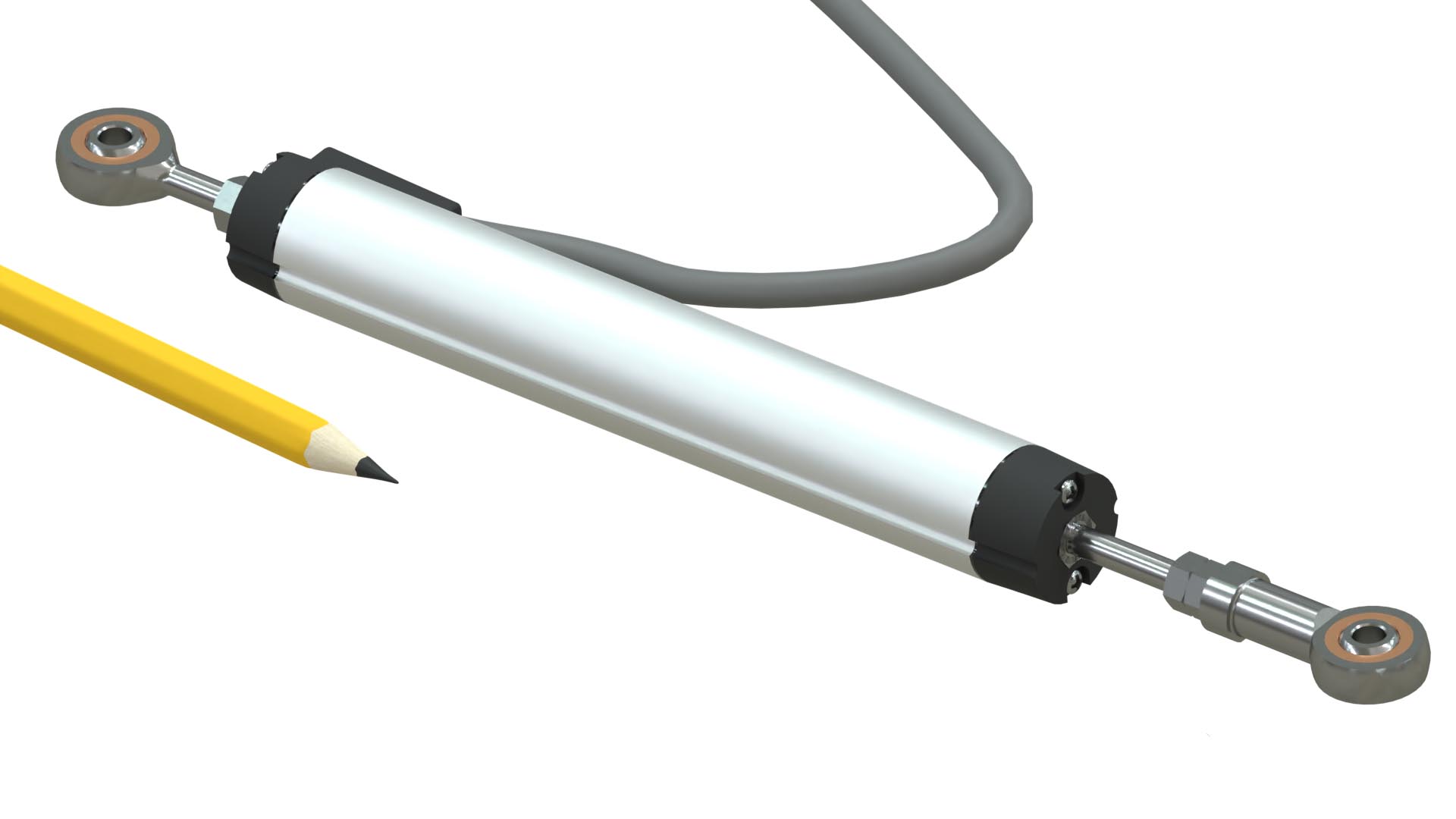Understanding Linear Shock Travel Position Sensors
Linear Potentiometer sensors are a simple yet effective choice for position sensing applications.
The primary sensing components of a Linear Potentiometer are a flat resistive element and a sliding contact (wiper). Linear Potentiometer resistive elements are often made of graphite, resistance wire, or conductive plastic (carbon particles in plastic). Wipers are often made from a metal alloy which provides its own spring force against the resistive element. They are usually multi-fingered to decrease contact resistance against the resistive element.
The circuit is essentially a voltage divider; as the wiper moves along the element, it provides an output voltage proportional to displacement. If wired as a voltage divider, the full scale output voltage is near 0 to 100% of the excitation voltage. For example, an excitation voltage of 5 VDC would produce an output of near 0 to 5 VDC. Or an excitation voltage of 10 VDC would produce an output of near 0 to 10 VDC.
The primary sensing components of a Linear Potentiometer are a flat resistive element and a sliding contact (wiper). Linear Potentiometer resistive elements are often made of graphite, resistance wire, or conductive plastic (carbon particles in plastic). Wipers are often made from a metal alloy which provides its own spring force against the resistive element. They are usually multi-fingered to decrease contact resistance against the resistive element.
The circuit is essentially a voltage divider; as the wiper moves along the element, it provides an output voltage proportional to displacement. If wired as a voltage divider, the full scale output voltage is near 0 to 100% of the excitation voltage. For example, an excitation voltage of 5 VDC would produce an output of near 0 to 5 VDC. Or an excitation voltage of 10 VDC would produce an output of near 0 to 10 VDC.
Ready to order or interested in more information?
Additional pricing or technical questions?

Categories
Date
Page Categories
